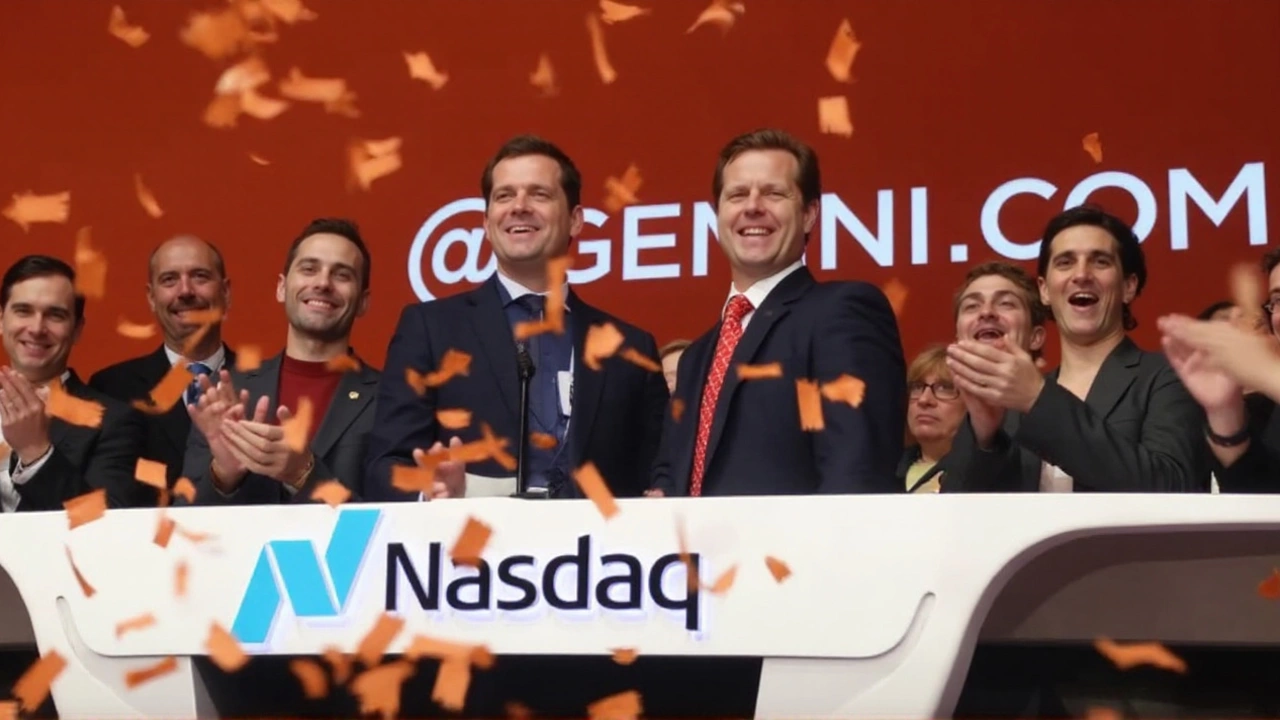A company with “Space Station” in its name just set its sights on the public markets. Gemini Space Station, Inc. filed an S-1 on August 15, 2025, seeking to raise $100 million. The filing left out the usual details—no price range, no share count, no ticker, no underwriters—which makes this a marker in the sand rather than a full reveal. It’s also reportedly linked to Winklevoss backing, a wrinkle that will draw attention well beyond the space crowd.
Early S-1s often use a $100 million figure as a placeholder while bankers, lawyers, and the company sort through valuation, demand, and disclosures. That appears to be the case here. What we do know: a firm with ambitions suggested by its name plans to tap public markets at a time when private space infrastructure is moving from idea to execution.
The timing matters. The International Space Station is slated to retire around 2030, and NASA has pushed industry to build commercial low-Earth-orbit (LEO) stations to take its place. If Gemini is indeed chasing orbital infrastructure—crew habitats, research platforms, or commercial modules—then it’s stepping into one of the toughest, most capital-hungry corners of aerospace.
For now, investors have more questions than answers. That’s normal at this stage. The SEC review process can take months, and the company will amend its S-1 as it firms up numbers, adds risk factors, and discloses more about its roadmap.
What’s actually in the filing—and what usually comes next
The August 15 filing indicates an intent to go public and raise $100 million. It does not disclose the terms. In IPO land, that usually means we’re early: the company signals its plans, then returns with S-1/A amendments that add a price range, share count, ticker, and a roster of underwriters.
From here, the typical sequence goes like this: the SEC reviews the document and sends comments; the company responds with amendments; at some point, a price range appears. After that, management hits the road for the investor “roadshow,” books are built, and the deal is priced—often within a week or two of the roadshow starting. Post-pricing, there’s usually a 180-day lock-up for insiders and a 25–40 day research quiet period for underwriting banks.
Use of proceeds, once disclosed, tends to fall into predictable buckets for a space hardware company: research and development, manufacturing and testing, procurement of long-lead items, regulatory and safety certification work, and working capital. If Gemini is building station hardware or services, expect heavy spend on systems engineering, life-support, docking, thermal control, power, and on-orbit assembly and operations.
The Winklevoss angle adds a twist. The twins are best known for crypto ventures, including the Gemini exchange, and later-stage bets in tech. Their name recognition can open doors and pull in a broader investor base, but space infrastructure is a different beast from software and tokens. It has long lead times, hard regulatory constraints, and unforgiving physics. Markets will be keen to see whether that backing is strategic, financial, or both—and how governance is structured.

Why this matters for the space economy
LEO is in the middle of a handoff. NASA wants to shift from owning the ISS to buying services from private stations. Several groups—ranging from established aerospace primes to startups—are competing to build the platforms that will host experiments, manufacturing, and possibly tourists through the 2030s. The prize is recurring revenue from government and commercial customers. The challenge is surviving the development valley before those contracts scale up.
The last wave of space listings—many via SPACs—offered a cautionary tale. Launch cadence slipped, cash burned faster than forecasts, and some companies struggled to convert memorandums into binding revenue. Investors learned to prize cash balance, technical milestones, customer concentration data, and real contracts over glossy timelines. Any fresh IPO in this sector will face that higher bar.
What sets an orbital-station business apart is the dependency chain. A station needs reliable crew and cargo transport, certified docking systems, and a clear operations model. It also needs customers: national space agencies, research labs, biopharma firms testing protein crystallization or microgravity biotech, materials companies, and, potentially, space tourism operators willing to buy time on orbit. The company must show how it plugs into that ecosystem.
Here are the big things investors will watch once more details drop:
- Business model: Is revenue driven by government services, commercial research, manufacturing, tourism, or a mix? What are the margins and contract durations?
- Partners and contracts: Any signed agreements with launch providers, spacecraft operators, or research institutions? Are there letters of intent that can convert into multi-year commitments?
- Technology readiness: What’s already built and tested? Are key subsystems at flight-ready status, and who has validated them?
- Timeline and milestones: When do hardware tests, on-orbit demos, and initial ops begin? What triggers revenue?
- Capital intensity and dilution: How much total funding is needed to reach cash flow break-even? How does $100 million fit into that plan?
- Regulatory path: How will the company meet human-rating standards, safety protocols, debris mitigation rules, and export controls?
- Insurance and risk-sharing: What coverage is in place for launch, on-orbit operations, and potential anomalies?
- Governance and control: How is the board structured? What rights do early backers have? How are conflicts avoided if outside investors hold large stakes?
Macro conditions matter too. If rates stay high, cash-burning hardware stories can face a tougher reception, because future revenue gets discounted more harshly. On the flip side, a credible path to government-backed contracts can stabilize forecasts and ease those concerns.
The name itself—Gemini Space Station—signals ambition. If the plan involves building or operating a station, the spend ramps fast and timelines run long. That makes transparency critical. Investors will look for clear, testable milestones and realistic buffers for delays. They’ll also look for a plan that doesn’t hinge on a single launch provider or a single anchor customer.
We also can’t ignore branding. Because the twins’ crypto exchange shares the Gemini name, some retail investors may assume a direct connection or crossover strategy. The S-1 will need to spell out any relationship between the entities, or make clear there isn’t one. Clarity there can prevent confusion and litigation risk later.
As for valuation, the first filing doesn’t commit to one. That will come into focus with the price range. Public comps are thin for orbital stations, so bankers may triangulate from revenue potential, contract visibility, IP, and the quality of partners. Given the hardware risk, discounts to rosy projections are common until milestones are met.
None of this answers the core questions yet. We still don’t know who the underwriters are, where the shares will list, or how the company defines its core product. That’s fine at this stage. The S-1 plants the flag. The next amendments will tell us what we’re actually buying when the book opens—and how the company plans to turn a bold name into durable, repeatable revenue.
Until then, one phrase will anchor the watchlist: Gemini Space Station IPO. It’s a placeholder today, but it points at a real gap opening in low-Earth orbit over the next five years. If Gemini can prove hardware readiness, secure anchor customers, and show a credible funding path, it could become one of the first pure-play public bets on private orbital infrastructure. If not, the market has shown it’s willing to wait.

Maverick Callahan
Hi, my name is Maverick Callahan, and I'm a sports enthusiast with a particular passion for soccer. I've spent years analyzing matches, studying team dynamics, and understanding the nuances of the beautiful game. As a writer, I enjoy sharing my insights and perspectives with fellow soccer fans through engaging articles and thought-provoking discussions. My goal is to help others appreciate the sport as much as I do and to contribute to the global soccer community in a meaningful way.